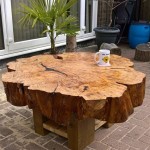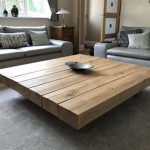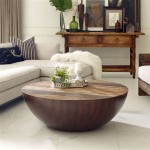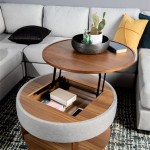How To Paint a Dining Table Distressed White Wood
Achieving a distressed white wood finish on a dining table is a popular method for adding character and a touch of rustic charm to a home. This technique intentionally reveals layers of the wood beneath the paint, creating a worn and aged aesthetic. The process requires careful planning, the right materials, and a methodical approach to ensure a durable and visually appealing result. This article outlines the complete process, from preparation to the final distressing touches, providing a comprehensive guide for transforming an ordinary dining table into a statement piece.
Before commencing any painting project, it is essential to thoroughly assess the existing condition of the dining table. This includes identifying any imperfections like scratches, dents, or loose joints that need addressing. A successful distressed finish relies on a sound base, so repair work done beforehand will significantly enhance the final outcome. Furthermore, the type of wood and any existing finish will dictate the necessary preparatory steps.
Preparation is Key: Cleaning, Sanding & Priming
The first step in preparing the dining table is a thorough cleaning. Use a mild detergent and warm water to remove any dirt, grease, or residue that may be present on the surface. Rinse the table with clean water and allow it to dry completely. This is crucial for ensuring proper paint adhesion.
Next, sanding is a critical step in the preparation process. The goal is to create a slightly rough surface for the primer and paint to grip. The specific grit of sandpaper required depends on the existing finish on the table. For glossy finishes, start with a coarser grit (around 120-150) to break down the sheen. For smoother surfaces, a finer grit (around 220) may suffice. Sand the entire table surface, paying particular attention to edges and corners. Sand in the direction of the wood grain whenever possible.
After sanding, remove all dust particles with a tack cloth or a vacuum cleaner with a brush attachment. Dust can interfere with the paint adhesion and create an uneven finish. Following dust removal, apply a quality primer specifically designed for wood. Primer serves several purposes: it seals the wood, provides a uniform surface for the paint, and improves adhesion. Apply the primer in thin, even coats, following the manufacturer's instructions regarding drying time. Multiple thin coats are preferable to one thick coat, as this minimizes the risk of drips and runs.
Once the primer is completely dry, lightly sand it with a fine-grit sandpaper (around 320-400) to smooth out any imperfections. Again, remove all dust before proceeding to the painting stage. This step ensures a flawlessly smooth base for the subsequent coats of paint.
A crucial factor in creating a durable and long-lasting distressed finish is the selection of appropriate materials. The type of paint, primer, and topcoat will all contribute to the overall quality and longevity of the finished dining table. Invest in high-quality products designed for furniture painting for optimal results.
Selecting Paint & Application Techniques
Choosing the right paint is paramount. Chalk paint is a popular choice for distressed finishes due to its matte appearance and ease of distressing. It adheres well to most surfaces and requires minimal surface preparation. Another option is latex paint, which is more durable and easier to clean but may require more sanding to achieve the desired distressed effect. Select a white or off-white shade that complements the style of the dining room and furniture.
Apply the paint in thin, even coats using a high-quality brush or roller. Work in the direction of the wood grain to achieve a smooth, uniform finish. Allow each coat to dry completely before applying the next. Multiple thin coats are always preferable to one thick coat, as this minimizes the risk of drips, runs, and brushstrokes. The number of coats required will depend on the type of paint and the desired level of coverage.
After the paint has completely dried, consider applying a sealant or topcoat. This will protect the painted surface from scratches, stains, and wear. Water-based polyurethane is a good option for a durable and clear finish. Apply the sealant in thin, even coats, following the manufacturer's instructions regarding drying time. Lightly sand between coats with a fine-grit sandpaper to ensure a smooth finish. The sealant will also enhance the distressed effect by protecting the painted areas while allowing the distressed areas to show through.
The choice of application tools can significantly impact the final finish. High-quality brushes minimize streaking and provide better control, especially when painting detailed areas. Foam rollers are ideal for achieving a smooth, even finish on large, flat surfaces. Proper care and maintenance of the brushes and rollers will also contribute to a better overall result.
Distressing & Finishing Touches
The distressing process is where the character and charm of the finished table are revealed. There are several techniques that can be used to create a distressed look, each with its own unique effect. Experiment with different methods to find the one that best suits the desired aesthetic.
Sanding is one of the most common distressing techniques. Use sandpaper to remove paint from edges, corners, and other areas that would naturally experience wear and tear over time. Vary the pressure and grit of sandpaper to create different levels of distress. Focus on areas that would naturally wear, such as edges, corners, and areas around knobs and handles.
Another technique is using a wet rag to remove paint from specific areas. This method is particularly effective for creating a subtle, weathered look. Simply dampen a rag with water and gently wipe away paint from the desired areas. This technique works best with chalk paint, as it is more porous and easier to manipulate when wet.
Dry brushing is a technique where a dry brush is used to apply a small amount of paint to the surface, creating a textured, uneven finish. This method is ideal for adding subtle highlights and creating depth. Dip the tip of the brush into the paint, then wipe off most of the paint onto a paper towel before applying it to the table.
Consider the overall design of the dining table when choosing distressing techniques. For a more rustic look, use more aggressive distressing methods. For a more subtle, elegant look, use lighter distressing techniques. Experimenting on a small, inconspicuous area of the table before applying the distressing to the entire surface is recommended.
After distressing, apply a final coat of sealant to protect the exposed wood and painted surfaces. This will also help to blend the distressed areas with the surrounding paint, creating a more cohesive look. Allow the sealant to dry completely before using the dining table.
Once the final coat of sealant has dried, inspect the table for any imperfections or areas that need touch-ups. Address any issues before using the table. Consider adding decorative hardware, such as new knobs or pulls, to further enhance the distressed look.
Proper room ventilation is crucial throughout the entire process. Work in a well-ventilated area to protect from fumes and ensure proper drying. Wear appropriate safety gear, such as gloves and a mask, to protect skin and respiratory system. Dispose of paint and other materials according to local regulations.
The successful transformation of a dining table into a distressed white wood piece is reliant on meticulous preparation, careful selection of materials, and the application of strategic distressing techniques. Each stage requires attention to detail, allowing for the creation of a durable and aesthetically pleasing furniture piece. By following these guidelines, any individual can achieve a professional-looking distressed finish, enhancing the character and charm of their dining space.

How To White Wash A Table In Under 30 Minutes Shabbyfufu Com

Antique Dining Table Updated With Chalk Paint Anderson Grant

Antique Dining Table Updated With Chalk Paint Anderson Grant

Antique Dining Table Updated With Chalk Paint Anderson Grant

The Beginner S Guide To Distressing With Chalk Paint By Annie Sloan Thinking Closet

How To Distress Furniture My New White Dining Table Thrifty And Chic

How To White Wash A Table In Under 30 Minutes Shabbyfufu Com

Antique Dining Table Updated With Chalk Paint Anderson Grant

Farmhouse White Dining Room Table Miss Mustard Seed

How To Paint Stain Whitewash Distress A Fancy X Farmhouse Table By Ana White Building Our Rez
Related Posts








